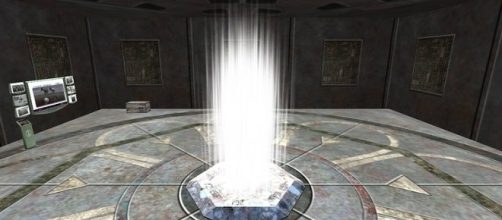Teleportation? A quantum internet? Sci-fi just got a lot closer to reality after researchers managed to teleport light particles over a six kilometer distance, according to a paper just published in the academic journal, Nature Photonics.University of Calgary physics professor Wolfgang Tittel, the team leader, described the phenomenon in an interview with the CBC. "What is remarkable about this is that this information transfer happens in what we call a disembodied manner."
What is quantum entanglement?
The researchers used advanced lasers on a dedicated fiber optic line.
The sensors that detected the transfer had to be kept below –272 Celsius. Those are the mechanical components. The theoretical component is much harder to describe, and lies at the heart of Quantum computing and the development of a quantum internet.
"Quantum entanglement" is a phenomenon that physicists have observed, but can't explain. Pairs of particles become linked permanently in such a way that the link exists no matter where the particles are actually located. What affects one will affect the other, no matter how large the distance between them.
In the 1940s, when physicists first began to develop the theory of quantum mechanics, Albert Einstein himself described quantum entanglements as "spooky action at a distance".
It is counter-intuitive and contradicts the usual applications of physical science.
Quantum physicists have found that subatomic particles can exist in two different states -- and in two different places -- at the same time. That's the building block of quantum computing, which can perform multiple functions simultaneously, in contrast with conventional binary computing that can only execute processes one at a time.
Scientists successfully teleport particle of light over six kilometres https://t.co/uT9TGwq5AA #quantum #science #technology #teleportation pic.twitter.com/ZX2ipUjF6f
— dna (@dna) September 22, 2016
'Beam me up Scotty'
In the recent experiment, the researchers in Calgary used a pair of entangled photons.
One was kept in their lab while another was sent over the fiber optic line to a location about 4 miles away. The University of Calgary team's work was duplicated independently by researchers at the University of Science and Technology of China, who sent light particles over 12.5km or about 7.7 miles in Hefei, China. In each case, another light particle was sent from a third, separate location to meet the teleported photon. As it interacted with the photon, its quantum state was simultaneously transferred to the photon that remained in the lab. Timing had to be exact to within about one-millionth of a second.
It's one of the longest teleportation experiments ever performed successfully, the longest being 89 miles over the Canary Islands.
However, while there have been longer teleportation transmissions, the recent experiments were the first to use three locations over a distance of over 1km, testing the viability of a quantum network. The use of fiber optics means that the experiment can be developed for practical use.
Scientists have been experimenting with teleportation since 1998, but the recent results represent a true milestone towards the global race for viable quantum computing networks. Quantum networks would be hacker proof. Quantum cryptography is a developing technology that would use teleportation to transmit data. Any interference in the transmission would be automatically detected.
The global race to lead in the development of teleportation and quantum computing technology just heated up.

